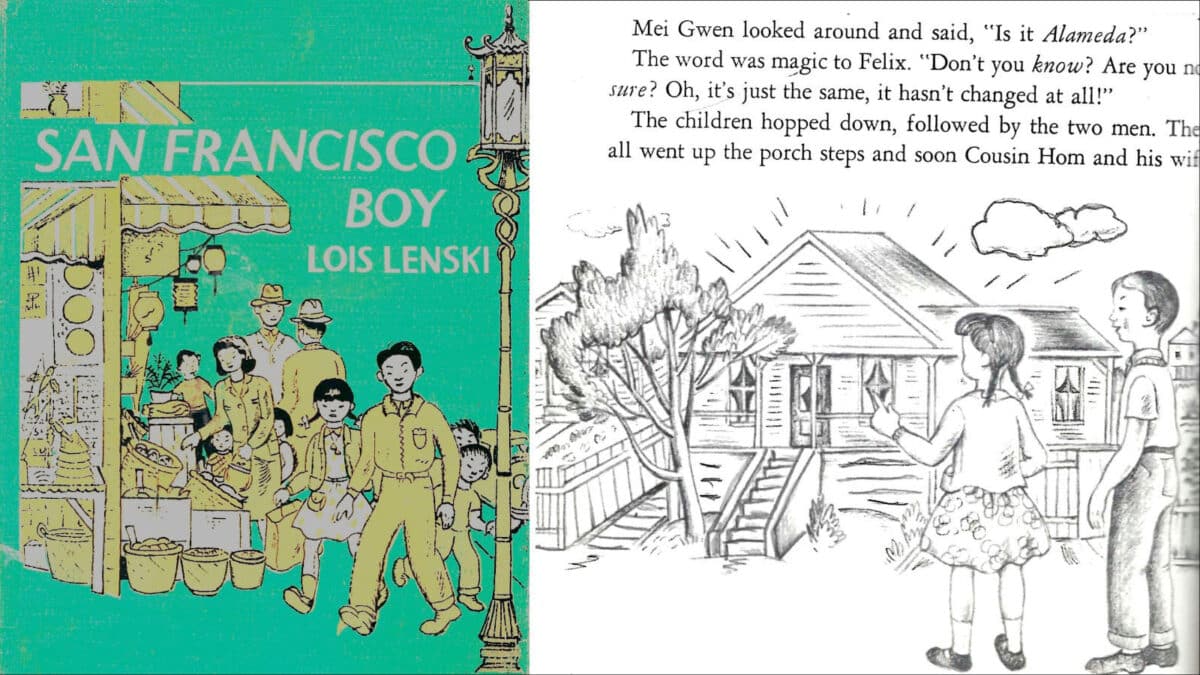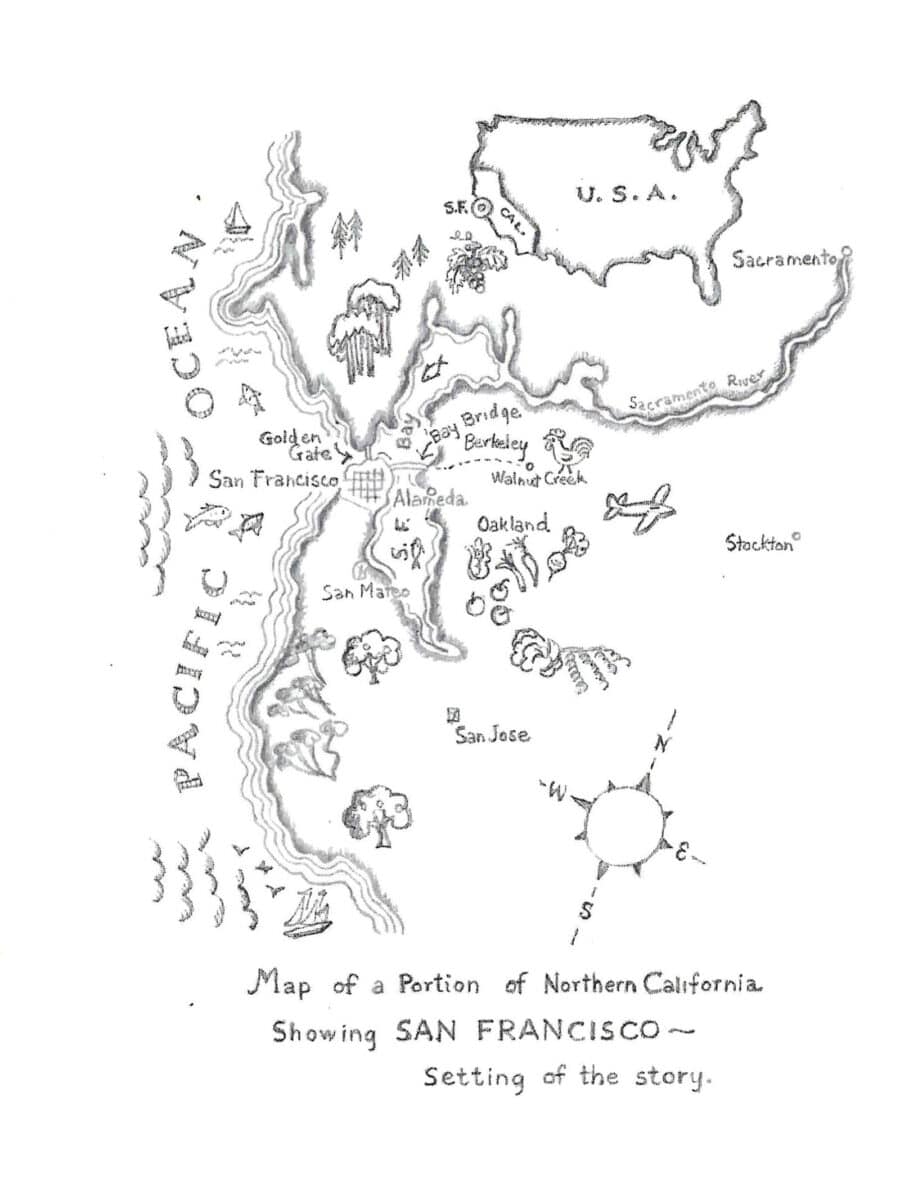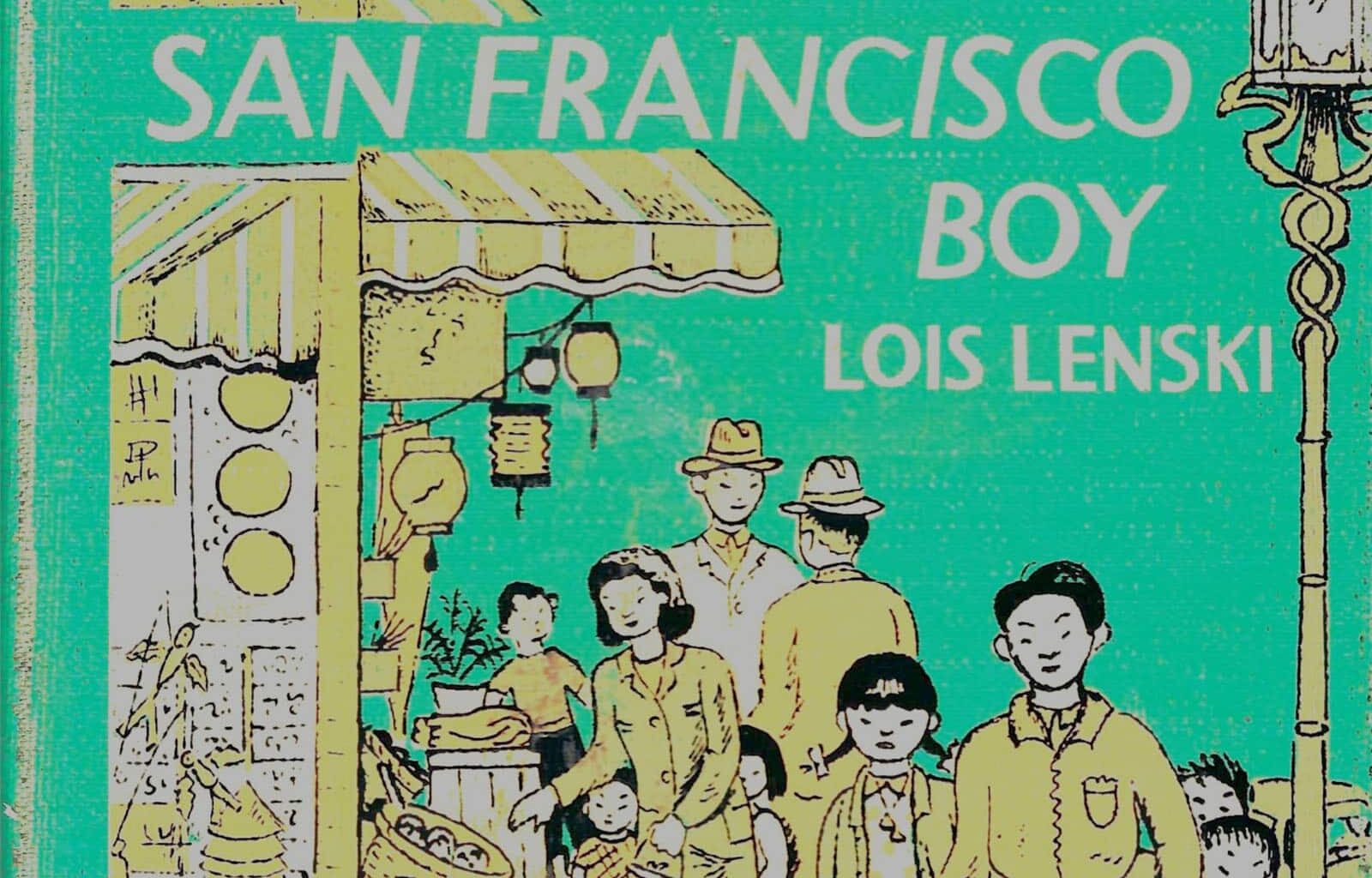Classic kids’ book peeks into 1950s Alameda
If you find yourself at a loss for something to read, may I recommend the children’s section of the Alameda Free Library for some truly classic literature? This is the long way around to get to a point, but bear with me.
Some time ago I happened across a favorite children’s author, Lois Lenski, and realized that she had captured the zeitgeist of several eras in American history. Lenski wrote middle-grade chapter books with a slightly enlarged font, which produced a thick book and contained enough illustrations that kids could feel like it was a grown-up book and could learn something about the world without even realizing it. An American author who illustrated such books as the Mr. Small series, the Betsy-Tacy series, and her own American historical children’s books, Lenski became instantly recognizable with her Scandinavian-esque line drawings and realistic (for their era) children’s tales.
Lenski was born in 1893 and died in 1974. While contemporary readers will find some of her midcentury pre-and postwar characterizations of persons of color racist, her stories were considered liberal for her time. Lenski wrote stories about vagrant families (such as Strawberry Girl, which won the Newberry medal), sharecropping families, and Dust Bowl survivors, with themes of family, hard work, and sticking together for survival. In the early 1900s, children were generally not centered in children’s stories, especially less-privileged children or children of color. Lenski had to fight to keep children the central focus of each story; she traveled and learned about various American children’s experiences to collect the details for each book. Her Appalachian Blue Ridge Billy, Cajun Bayou Suzette, and her extremely local (to us) San Francisco Boy novels are just such tales.
 Excerpt from San Francisco Boy by Lois Lenski.
Excerpt from San Francisco Boy by Lois Lenski.
I found San Francisco Boy in the Alameda Free Library’s catalog, and later bought my own copy for my collection, because I was delighted to find that Alameda was sprinkled liberally throughout this Chinatown boy’s experience. Published in 1955, San Francisco Boy features the misadventures of Felix Fong. When the Fong family relocates from a quiet town (Alameda) to bustling San Francisco, the move thrills his younger siblings but leaves Felix feeling out of place. While the family embraces the excitement of city life, he longs for the open grass and pond of their old home. The noise and crowding of the city overwhelm him and it’s hard to make new friends. Ultimately, he decides to run away—back to you know where.
 Excerpt from San Francisco Boy by Lois Lenski.
Excerpt from San Francisco Boy by Lois Lenski.
Even here, in his dream-place, in Alameda, could change come?—Lois Lenski, San Francisco Boy
Felix would likely have lived in Alameda’s Chinatown, which may leave you scratching your head if you haven’t read any of Dennis Evanosky’s local history books. In case you don’t know, Alameda once had a thriving Chinatown. Lincoln Avenue, where the main library is now located at the intersection with Oak Street, was the edge of Alameda’s Chinatown, and the sole survivors of this once-bustling neighborhood are the wooden house next to the library and the stucco building where Gim’s Chinese Kitchen still stand. The urban ghetto of Alameda’s Chinatown, where fictional Felix Fong lived, was more toward the estuary, where Goodwill and Jim’s Diner are now located.
Yet Felix misses “the country,” so verdant was Alameda in those days, and his sister complains about his moping.
“Stop talking about your old fishpond,” said Mei Gwen. “I’m tired of hearing about it. You and all your pets out there in Alameda. We’re in San Francisco now, and everything is different!”
“I like it better in the country,” said Felix.
“Alameda is not country. It’s a town—the houses are close together there. Mother told me so.”
“To me, it was like the country,” said Felix sadly. “They always have grass in the country.”
“Grass? Who wants grass?”
“People in the city are not friendly,” said Felix. “Even those in our own apartment house never speak to us. Nobody tries to be kind to us. That’s why I like Alameda better.”
Felix’s affection for Alameda is charming, and while the author eventually teaches the lesson that we must be happy where we are, anyone who has had to leave Alameda and live elsewhere can hardly blame him for longing, for yearning.
As the truck bounced along the highway, Felix kept thinking about Alameda. He wished [Uncle Ed would] stop there…Suddenly, to his surprise, he saw a familiar street. There was the public library where he used to borrow books. There was the police station with the tall Christmas tree by the sidewalk…All the buildings looked familiar.
His happiness was so great, he could not speak.
Felix’s feeling is familiar. Crossing the bridge back to the Island or entering the Tube is always a gratifying feeling, and the author got this just right.
Later, when Felix runs away to Alameda, Lenski’s description of the center of Alameda’s Chinatown is recognizable, even 75 years later. Alameda’s history of bulldozing houses to make way for—gasp!—apartment buildings (hello, Measure A) and parking lots also seem familiar to today’s reader.
Down at the corner by the Times building, he turned into the narrow little side street…[but] what he saw was a big open space…The houses were gone. They had been moved away or torn down. The boy’s heart skipped a beat.
Even here, in his dream-place, in Alameda, could change come?…How could this well-loved neighborhood change like this? Was Alameda turning into a big city, too? Would it never be “country” anymore?
The mechanisms of change have been rolling through Alameda since at least 1820. It is both gratifying and poignant to see this fictional 1950s child feeling the same emotions that some of us now feel when we see a new building going up, or an old house get a wild paint job. In some ways, everything in Alameda is historic, and simultaneously, change itself is just part of history.
So the long moral to this little meander through the children’s section is that you never know where you will find a slice of history, an old story layered underneath a place you think you know. If you want to learn about your home, go to the library as well as the internet, and you might be surprised.
Although Lois Lenski’s San Francisco Boy is an old book, it’s still being reprinted (most recently in 2015), and you can buy your own copy via your favorite bookstore. It’s also available as an ebook. Just because it’s old doesn’t mean it’s not worth your time to read it now.
Here’s to the old books we haven’t gotten around to reading—yet.
Read the book for yourself:
San Francisco Boy
Lois Lensky
ISBN: 978-1504021999
Julia Park Tracey writes occasional book reviews for the Alameda Post. She was the founding editor of the former Alameda Sun, is a founding board member of the Alameda Post, Poet Laureate Emeritus of Alameda, and the author of nine books including the Veronika Layne mystery series set in Alameda. Follow her on any social media platform @juliaparktracey.

